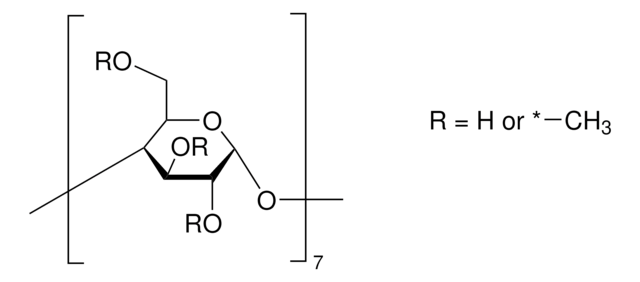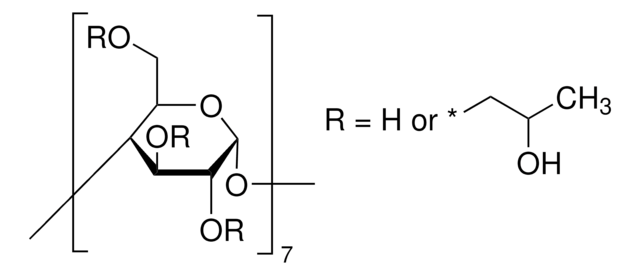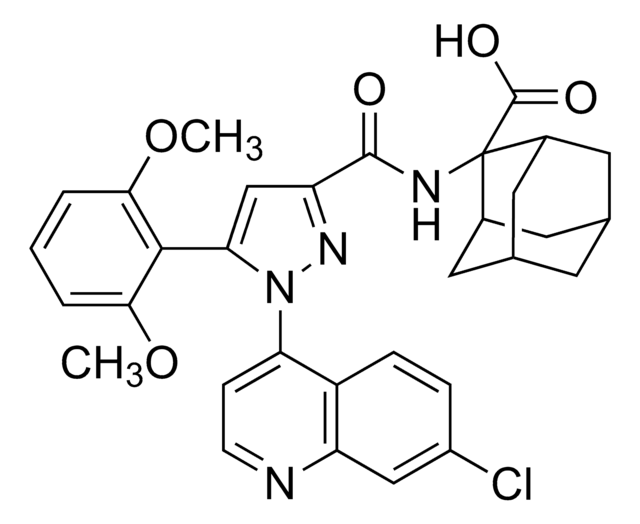HTS034M
ChemiSCREEN NTR1 Membrane Preparation
Human NTR1 / NTS1 GPCR membrane preparation for Radioligand binding Assays & GTPgammaS binding.
Sign Into View Organizational & Contract Pricing
All Photos(2)
About This Item
UNSPSC Code:
41106514
eCl@ss:
32161000
NACRES:
NA.84
Recommended Products
biological source
human
Quality Level
recombinant
expressed in Chem-2 cells
manufacturer/tradename
ChemiScreen
Chemicon®
concentration
0.5 mg/mL
technique(s)
ligand binding assay: suitable (GTPγS)
radioligand binding assay (RLBA): suitable
NCBI accession no.
UniProt accession no.
shipped in
dry ice
General description
Human NTR1
Neurotensin is a 13 amino acid peptide that induces hypothermia and mediates analgesia when administered centrally, and also mediates the behavioral effects of antipsychotic drugs in rodents (Kinkead and Nemeroff, 2004). In addition, several intestinal functions, such as contractility and inflammation, are mediated by neurotensin (Castagliuolo et al., 1999). The actions of neurotensin are mediated by two GPCRs, NTR1 (or NTS1) and NTR2 (or NTS2). NTR1 knockout mice are resistant to the hypothermic, analgesic and contractile effects of neurotensin, indicating that NTR1 is the primary mediator of these effects (Pettibone et al., 2002). Small molecule antagonists, including SR48692 and SR142948A, that are partially selective for NTR1 also interfere with the biological effects of neurotensin (Labbé-Jullié et al., 1998).
Chemicon′s NTR1 membrane preparations are crude membrane preparations made from our proprietary stable recombinant cell lines to ensure high-level of GPCR surface expression; thus, they are ideal HTS tools for screening of antagonists of neurotensin/NTR1 interactions. The membrane preparations exhibit a Kd of 1.5 nM for [125I]-neurotensin. With 2.5 μg/well NTR1 Membrane Prep and 0.5 nM [125I]-neurotensin, a greater than 7-fold signal-to-background ratio is obtained.
Chemicon′s NTR1 membrane preparations are crude membrane preparations made from our proprietary stable recombinant cell lines to ensure high-level of GPCR surface expression; thus, they are ideal HTS tools for screening of antagonists of neurotensin/NTR1 interactions. The membrane preparations exhibit a Kd of 1.5 nM for [125I]-neurotensin. With 2.5 μg/well NTR1 Membrane Prep and 0.5 nM [125I]-neurotensin, a greater than 7-fold signal-to-background ratio is obtained.
Application
Radioligand binding assay, and GTPgammaS binding.
Biochem/physiol Actions
GPCR Class: A
Protein Target: NTR1 / NTS1
Target Sub-Family: Neurotensin
Quality
Signal:background and specific binding values obtained in a competition binding assay with NTR1 membrane prep:
SPECIFICATIONS: 1 unit = 5 µg
Bmax: 12.9 pmol/mg
Kd: 1.5 nM
| 5 µg/well | |
|---|---|
| Signal:Background | 47 |
| Specific Binding (cpm) | 17556 |
SPECIFICATIONS: 1 unit = 5 µg
Bmax: 12.9 pmol/mg
Kd: 1.5 nM
Specifications
Inucbation Conditions
Binding buffer: 50mM HEPES, 5mM MgCl2, 1mM CaCl2, 0.2% BSA, pH to 7.4 and filter.
Radioligand: [125I] Neurotensin (PerkinElmer#: NEX198)
One vial contains enough membranes for at least 200 assays (units), where an unit is the amount of membrane that will yield greater than 5-fold signal:background with 125I-labeled neurotensin at 0.5 nM.
Binding buffer: 50mM HEPES, 5mM MgCl2, 1mM CaCl2, 0.2% BSA, pH to 7.4 and filter.
Radioligand: [125I] Neurotensin (PerkinElmer#: NEX198)
One vial contains enough membranes for at least 200 assays (units), where an unit is the amount of membrane that will yield greater than 5-fold signal:background with 125I-labeled neurotensin at 0.5 nM.
Physical form
PACKAGING: Packaging buffer: 50 mM Tris pH 7.4, 10% glycerol and 1% BSAPackaging method: Membranes protein were adjusted to 0.5 mg/ml in 1 ml packaging buffer, rapidly frozen, and stored at -80oC.
Storage and Stability
Maintain frozen at -70°C for up to 2 years. Do not freeze and thaw.
Legal Information
CHEMICON is a registered trademark of Merck KGaA, Darmstadt, Germany
Disclaimer
Unless otherwise stated in our catalog or other company documentation accompanying the product(s), our products are intended for research use only and are not to be used for any other purpose, which includes but is not limited to, unauthorized commercial uses, in vitro diagnostic uses, ex vivo or in vivo therapeutic uses or any type of consumption or application to humans or animals.
Storage Class Code
12 - Non Combustible Liquids
WGK
WGK 2
Flash Point(F)
Not applicable
Flash Point(C)
Not applicable
Certificates of Analysis (COA)
Search for Certificates of Analysis (COA) by entering the products Lot/Batch Number. Lot and Batch Numbers can be found on a product’s label following the words ‘Lot’ or ‘Batch’.
Already Own This Product?
Find documentation for the products that you have recently purchased in the Document Library.
I Castagliuolo et al.
The Journal of clinical investigation, 103(6), 843-849 (1999-03-17)
The neuropeptide neurotensin mediates several intestinal functions, including chloride secretion, motility, and cellular growth. However, whether this peptide participates in intestinal inflammation is not known. Toxin A, an enterotoxin from Clostridium difficile, mediates pseudomembranous colitis in humans. In animal models
Douglas J Pettibone et al.
The Journal of pharmacology and experimental therapeutics, 300(1), 305-313 (2001-12-26)
Mice deficient in the neurotensin (NT)-1 receptor (NTR1) were developed to characterize the NT receptor subtypes that mediate various in vivo responses to NT. F2 generation (C57BL6/Sv129J) NTR1 knockout (-/-) mice were viable, and showed normal growth and overt behavior.
Mutagenesis and modeling of the neurotensin receptor NTR1. Identification of residues that are critical for binding SR 48692, a nonpeptide neurotensin antagonist
Labbe-Jullie, C, et al
The Journal of Biological Chemistry, 273, 16351-16357 (1998)
Neurotensin, schizophrenia, and antipsychotic drug action
Kinkead, Becky and Nemeroff, Charles B
International Review of Neurobiology, 59, 327-349 (2004)
Our team of scientists has experience in all areas of research including Life Science, Material Science, Chemical Synthesis, Chromatography, Analytical and many others.
Contact Technical Service


